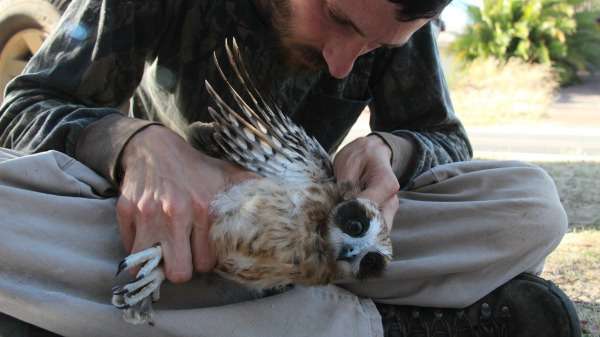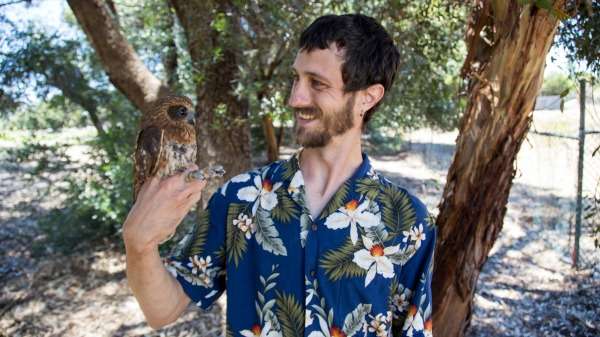What is killing Australia's smallest owls?

When a rare bird is in decline, its rarity becomes part of the problem: how can you protect a species you poorly understand and seldom see? That's where the boobook—Australia's smallest and most common owl—comes in.
"Once something's gone, it's difficult to study why it's not there," Edith Cowan University PhD candidate Mr Michael Lohr says.
"Boobooks are declining, and that's a concern, but the fact is they're common, so by studying boobooks, I hope to gain a better understanding of what's driving the decline in more vulnerable species."
Mr Lohr is studying whether different fragmented boobook populations are affected differently by rat poison, inbreeding, the loss of nest hollows, and exposure to cat-borne parasite, toxoplasmosis.
Brain-bending parasites
"Toxoplasmosis alters the brain chemistry of its host," Mr Lohr says.
"In humans, latent toxoplasmosis infection is associated with increased risk of gambling addiction, drug and alcohol problems... there's increased risk of causing car accidents, and of being hit by a car."
"In rodents they've shown it delays reaction time... It makes it more likely they're going to be eaten by a cat."
We don't yet know how the parasite affects bird brains.
"Because boobooks get hit by cars so frequently, I'm curious to see if infection is a factor increasing their risk of being hit," Mr Lohr says.

Anticoagulant rodenticides
Mr Lohr is also testing for a link between use of anticoagulant rat poisons and bird numbers; such poisons have already been shown to affect predatory bird populations in the US and Europe.
"This will probably be the first project to directly test this link in Australia," Mr Lohr says.
Second-generation rodenticides can persist in the liver for months, providing ample opportunity for predatory birds to accumulate toxicity.
"I dissected a boobook yesterday, picked up on Monday in a bushland in Cannington, and it showed pretty standard signs of acute lethal rodenticide poisoning," Mr Lohr says
Call for help
Mr Lohr is keen to hear from anyone who sees a boobook, dead or roosting.
"Any road-killed specimens are really helpful, I can get genetic information from them," he says.
"If you have a dead bird, shoot me an email, and I'll come and pick it up. Pop it in a plastic bag in the fridge, ideally, and if I can't get out there soon enough, freezer's okay too."
Mr Lohr would also like to hear of roosting boobooks, particularly in the wheatbelt and forested areas.
Provided by Science Network WA
This article first appeared on ScienceNetwork Western Australia a science news website based at Scitech.


















